Reading activities for 1st graders
First Grade Reading Comprehension Activities
First grade is an exciting time of discovery for early readers. They’re spending less time decoding and word solving and more time comprehending and making sense of the texts they’re reading. Early readers are building reading identities and reading for meaning and joy. Explicitly teaching reading comprehension strategies like making predictions, asking questions, retelling, and inferring helps young readers build the skills they need. These first grade reading comprehension activities are a good place to start.
1. String up a retelling rope
Learning how to retell a story helps young learners as readers and thinkers. It helps them organize their thoughts as they read and recognize when their thinking changes. Using these symbols representing different elements of a story, students can string up a cute retelling rope while gaining valuable comprehension skills.
Learn more: First Grade W.O.W.
2. Visualize the story with illustrations
Visualizing is an important skill for understanding what you’re reading. This blog includes two fun visualizing activities. In the first, students are given a title and are asked to draw an illustration that matches that title. In the second, students are given clues about an object and are asked to draw the object the clues are hinting at.
Learn more: You Clever Monkey
3. Make predictions with a graphic organizer
Making predictions is a just-right reading strategy for emerging readers. During a read-aloud, find a few good stopping points to ask students what they think will happen next.
Learn more: Brown Bag Teacher
4. Make a “beginning, middle, and end” flip chart
One tried-and-true way to teach summarizing to early readers is instructing them to identify the beginning, middle, and end of a story. This easy-to-make flip chart is just an 8 x 11 piece of plain paper folded vertically then divided into thirds. On the front half, students will draw a picture of what happens in the three sections of the story.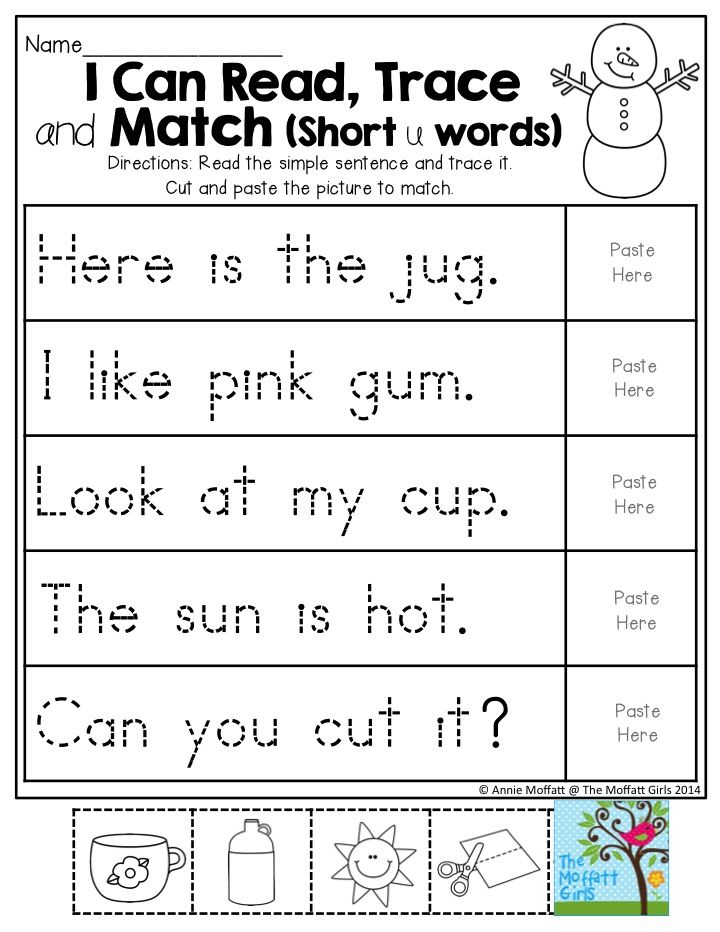 Underneath each flap is a short written description.
Underneath each flap is a short written description.
Learn more: Bishop’s Blackboard
5. Ask questions with story sticks
Good readers ask questions before, during, and after they read. These cute story sticks make a game of first grade reading comprehension. Perfect to use with small reading groups or with partners.
Learn more: The Happy Teacher
6. Master the five-finger retell
One strategy you can teach students is the five finger retell. Each finger stands for a different part of the story. Assigning a different finger for each part gives students a kinesthetic connection and makes it easier for them to remember.
Learn more: Mrs. Wheeler’s First Grade Tidbits
7. Summarize using simple signal words
Sometimes with early readers, simpler is better. Start with these basic questions—who?, what?, when?, where?, how?, and why?—to help kids go deeper into their understanding.
Learn more: This Reading Mama
8.
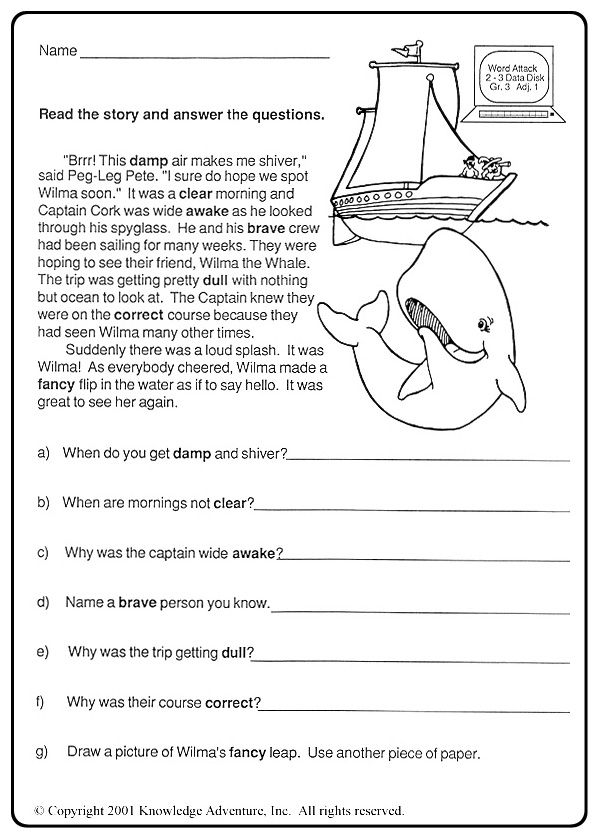 Practice with story maps
Practice with story mapsThere are tons of fun tools to help students build reading comprehension, and story maps are one of them. Here are 15 free downloadable story maps to help your first graders practice going beyond just the words when they read.
Learn more: Education.com
9. Figure out problem and solution with a graphic organizer
Every fiction story has, among other elements, a problem and solution. This lesson helps students understand that a story’s problem and solution fit together like pieces of a puzzle.
Learn more: My Primary Paradise
10. Retell the story using LEGO bricks
Put two things that first graders love together: reading and building. Read a story together, then allow students to use blocks to build a scene from the story. As they build, they can describe details from the story.
Learn more: The Educators’ Spin On It
11. Retell using story cubes
Retelling is a helpful comprehension skill for readers.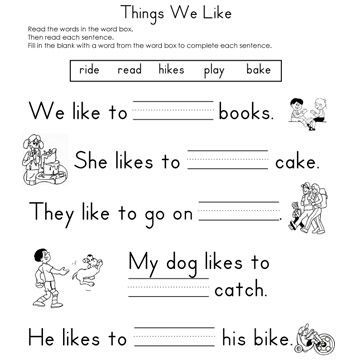 These six cubes encourage readers to retell the story in different ways. They are prefect for reading partners and to use with small groups.
These six cubes encourage readers to retell the story in different ways. They are prefect for reading partners and to use with small groups.
Learn more: Every educaid
12. Play the Oh Snap! word game
Sight words (aka high-frequency words) are words readers encounter most frequently in texts. Early readers benefit from knowing a large bank of sight words, which encourages fluent reading. This fun sight word game is a great way to improve reading skills and build reading fluency.
Learn more: School Time Snippets
13. Use scooping phrases
The goal of reading fluency is better comprehension. To read with fluency or expression, readers must comprehend the story events. Teach early readers to use “Scooping Phrases” to scoop up words to form phrases within sentences. This effective strategy also works well with struggling readers.
Learn more: This Reading Mama
14. Introduce wordless picture books
As readers encounter more-difficult texts, character traits become less explicit.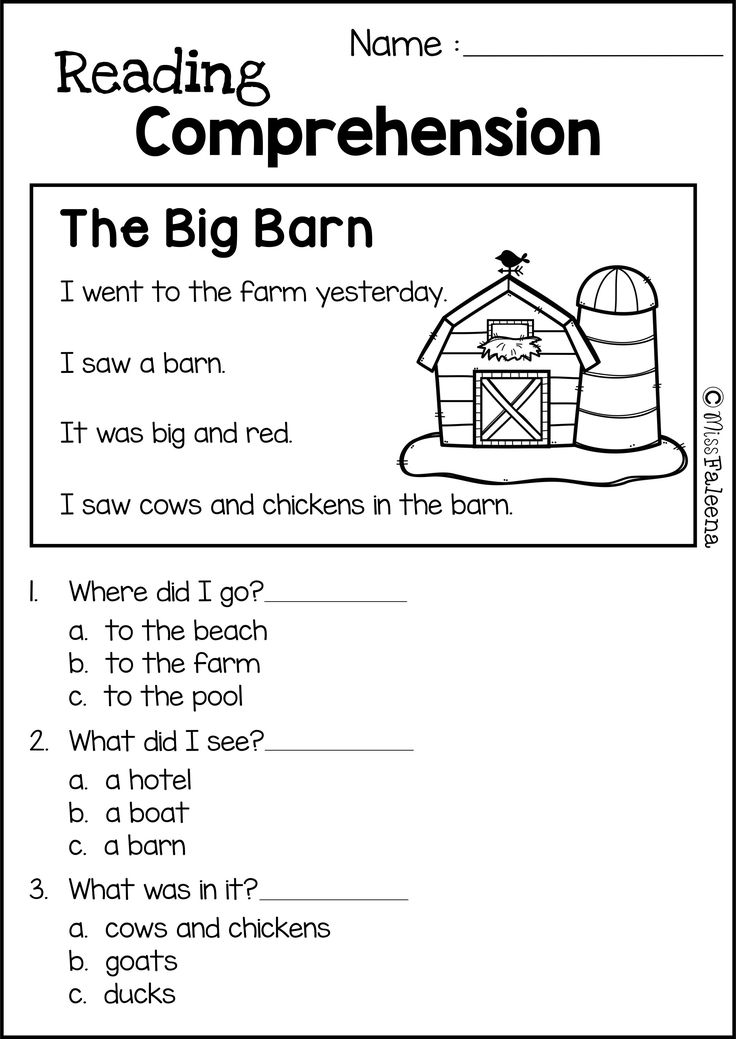 To determine what the character is like, the reader has to do more inferential work. Using wordless picture books is a great way to introduce early readers to making inferences.
To determine what the character is like, the reader has to do more inferential work. Using wordless picture books is a great way to introduce early readers to making inferences.
Learn more: Ashleigh’s Education Journey
15. Inference using thought bubbles
Foundational inference activities give first graders an opportunity to practice their inferring skills. As they move into texts, first graders can infer what a character is thinking in the story and then add a thought bubble to explain it.
Learn more: The Teacher Next Door
If you like these first grade reading comprehension activities, check out our fun, printable first grade writing prompts.
Plus, get all the latest teaching tips and tricks by signing up for our newsletters!
29 Fun and Easy 1st Grade Reading Comprehension Activities
First grade is such an important time for a child. They are becoming more independent in a variety of ways! One of the most important aspects of this independence is their reading.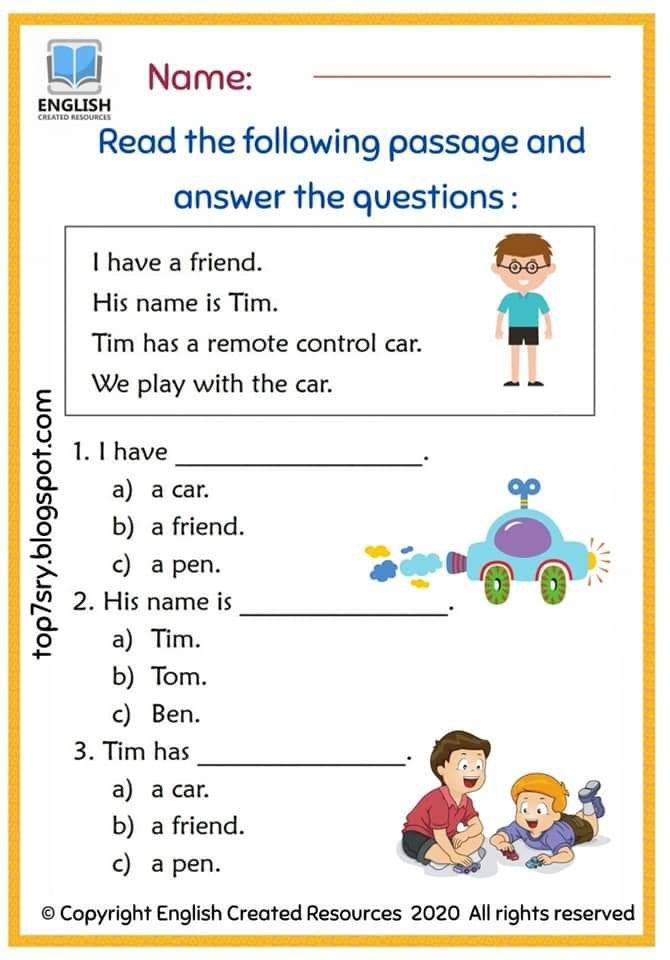 Reading will be the foundation for everything they do in the future. This is why reading comprehension comes in full force during these pivotal developmental years.
Reading will be the foundation for everything they do in the future. This is why reading comprehension comes in full force during these pivotal developmental years.
Building comprehension skills can be a daunting experience for parents, caregivers, and educators. This is most likely why you ended up here. Keep reading for a total breakdown of some of the best comprehension strategies that can be both used at home and in the classroom!
Keeping It Fun
1. Puzzle Retelling
In first grade, we LOVE puzzles. This is why puzzle retelling builds such excellent comprehension skills. Using background knowledge helps kids to be confident and excited about a comprehension activity. Puzzle retelling is also super easy to set up!
Learn more: teacherspayteachers.com
2. Five Finger Retell
Any elementary teacher will tell you how much they love the 5-finger retelling comprehension activity. This activity gives students the visual of retelling a story. It’s also, so much fun! Teachers have been known to incorporate finger puppets, a comprehension worksheet, and many different creative comprehension strategies.
This activity gives students the visual of retelling a story. It’s also, so much fun! Teachers have been known to incorporate finger puppets, a comprehension worksheet, and many different creative comprehension strategies.
Learn more: teacherspayteachers.com
3. Sight Word Practice
Sight word practice is one of the all-important reading and comprehension skills for Grade 1. Creating active readers by building vocabulary through an active vocabulary game is one of the best ways to keep your children engaged. Here are a few great sight word comprehension activities.
Cute story sticks are always a great way to teach sight words! This is something you can easily make for your classroom and at home!
4. Sight Word Bingo
Bingo is always a favorite! It is great and always a highly rated vocabulary game. Here you'll find a FREE resource that allows you to generate a bingo card based on the sight words students are learning and the basis of their background knowledge.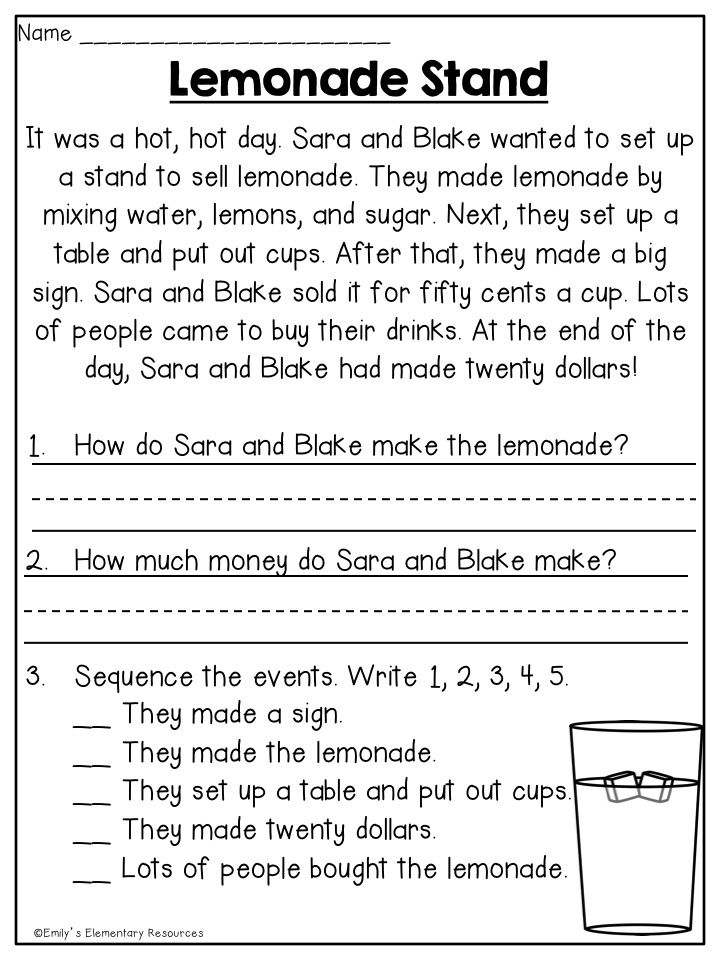
5. Color By Sight Word
There are so many colorful reading comprehension reading worksheets that go along with sight word vocabulary. There are tons of these worksheets throughout the web, here is a FREE resource to see how your students and children will respond.
6. Mental Images
First grade is a time of discovery for children. Visualizing and making mental images is an exciting time for young learners. Providing them with the comprehension skills they need for a love of reading. Mental images can be a great way to incorporate writing prompts into your child’s reading comprehension activities.
Mrs. Jump’s class has some great comprehension activities. Here are some mental image comprehension activities!
7. Comprehension Checks
Comprehension checks may not sound that exciting BUT they can always be fun! Your children will love all of the colorful reading comprehension worksheets that come with comprehension checks.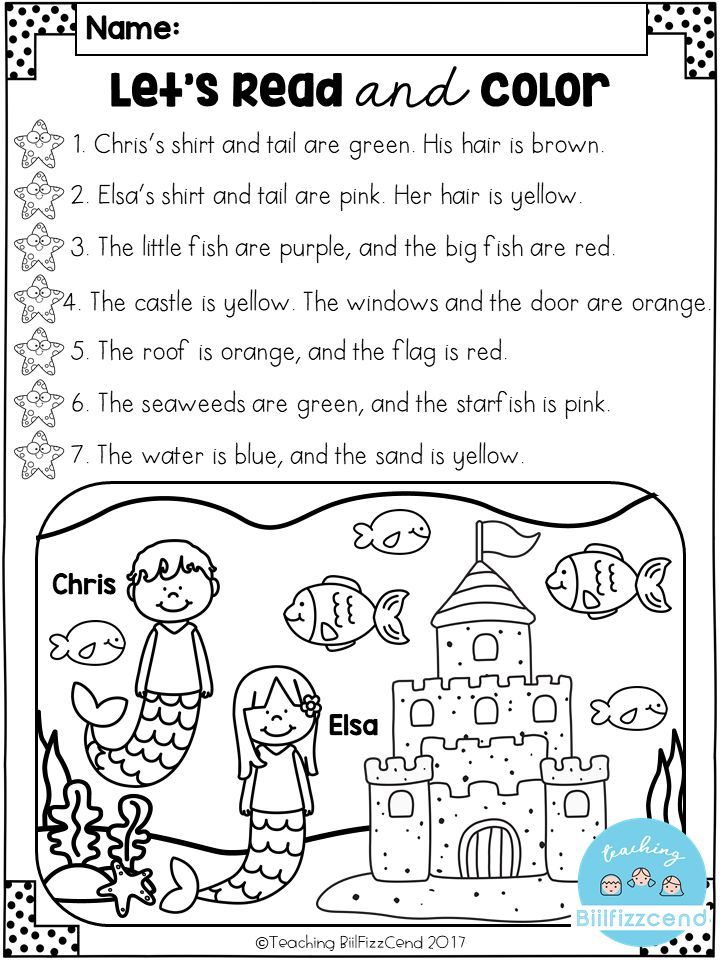 You can make them yourself quite easily, which makes them perfect for at home or in the classroom. Here are some resources for your classroom!
You can make them yourself quite easily, which makes them perfect for at home or in the classroom. Here are some resources for your classroom!
8. Brain Movies
Brain Movies are a great way to build student comprehension skills. Making a Brain Movie is easy for you and for your students. Here is a great way to incorporate it into your classroom.
During a read-aloud, pause when you come across a descriptive passage. Have students close their eyes and picture what is happening, while you are reading! This blog gives a great breakdown of how to incorporate this in your classroom and the importance of Brain Movies incorporation.
9. Printable Story Mats
Printable story mats are easy to make and great for comprehension! You can make them any size that fits your needs. You can find a free download online here.
10. Puppets Steal the Show
Puppets are a great way to get your students engaged, active, and laughing.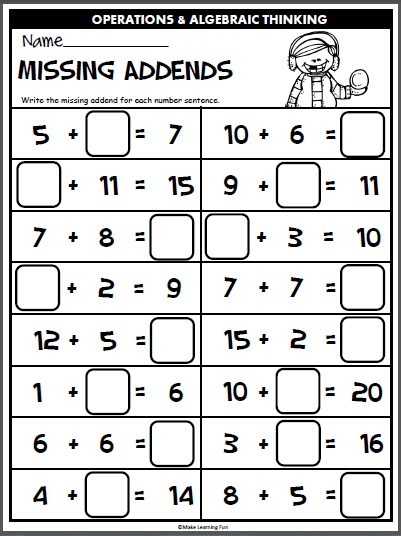 Puppets can be used for a variety of comprehension activities. Here is a blog that gives an amazing breakdown for using puppets to build comprehension skills.
Puppets can be used for a variety of comprehension activities. Here is a blog that gives an amazing breakdown for using puppets to build comprehension skills.
11. Active Reading
Modeling active reading with your students is extremely important when reading anything. It is important to discuss what is happening in the story as you read. This will help your child to understand and empathize with the characters.
Make sure to ask questions that the child can relate to - Have you ever felt this way? What do you think happened? How do you think he/she/it feels? - Provoking and furthering a child’s thinking process will most definitely help their comprehension skills.
Here is a great blog post to help you practice active reading in the classroom and at home.
12. Think-Aloud
Think-alouds are one of the most amazing comprehension tactics! Think-alouds give students the space to make connections in their lives.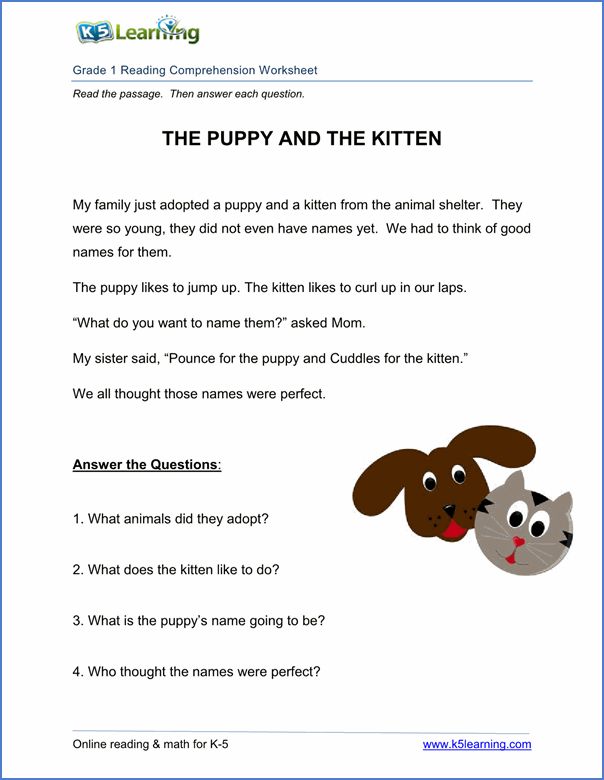 When practicing the think-aloud comprehension strategy you should always connect a book back to a time that the child can relate to.
When practicing the think-aloud comprehension strategy you should always connect a book back to a time that the child can relate to.
By connecting the book to other book’s the child has read, the child’s life experiences, and the ideas and lessons in the book you are helping to build a relationship with books. Here is a great blog that will help you use this comprehension strategy.
13. Read and Answer!
Incorporating media into the classroom has long been a part of the newest curriculum. It can sometimes be difficult to use media effectively in your ELA curriculum. This video can be used as an entire class, or in small groups. Either way, it will help you to assess students on their knowledge of reading aloud or in their heads and answering questions.
Learn more: North Carolina Department of Public Instruction
14. Listen and Comprehend
This is another video that will be perfect for your kiddos to complete on their own or in small groups.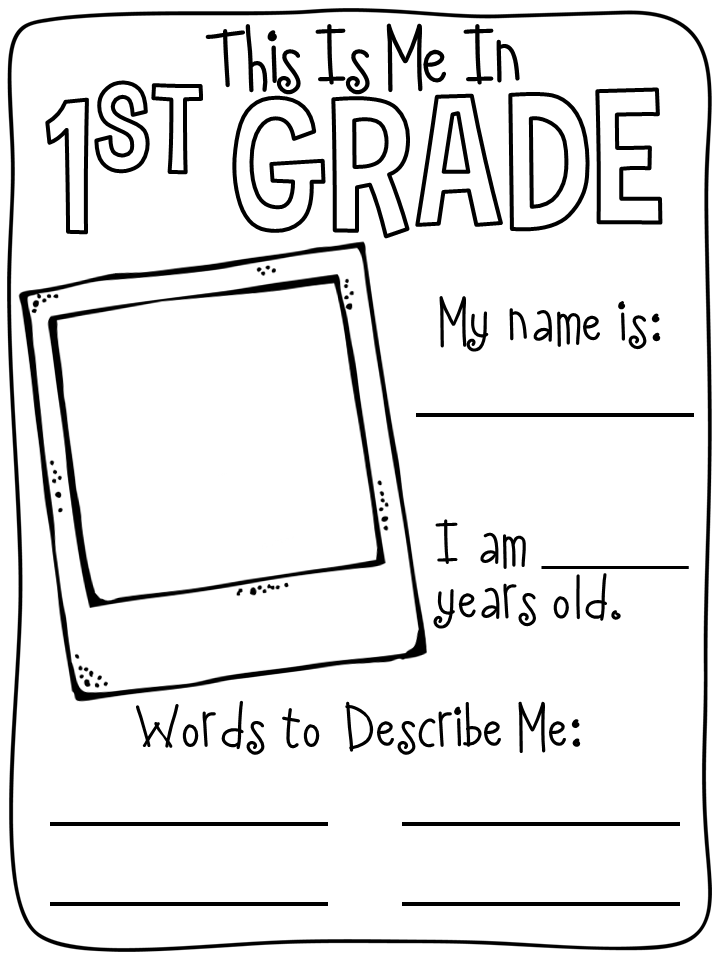 Listening to others read is very important for first grade, language development. In this video, students will listen to the story and answer the questions that follow.
Listening to others read is very important for first grade, language development. In this video, students will listen to the story and answer the questions that follow.
Learn more: Hand 2 Mind
15. Reading Comprehension Check-in
Wordwall provides some of the most entertaining lessons on the web! These lessons are created and shared by other teachers. The activity below can be used in both small groups or as a whole group lesson to assess where your students are in their level of comprehension!
Learn more: Worldwall
16. The Random Story Wheel!
The random wheel is such a fun classroom integration. Project this wheel on a smartboard and have students spin on their turn. Whether students answer these questions in small groups or individually, they will love to play. The best part about this random wheel is that it can be used with any story.
Learn more: Worldwall
17. Open the Box Activity
Another amazing activity offered by Word Wall is "Open the Box".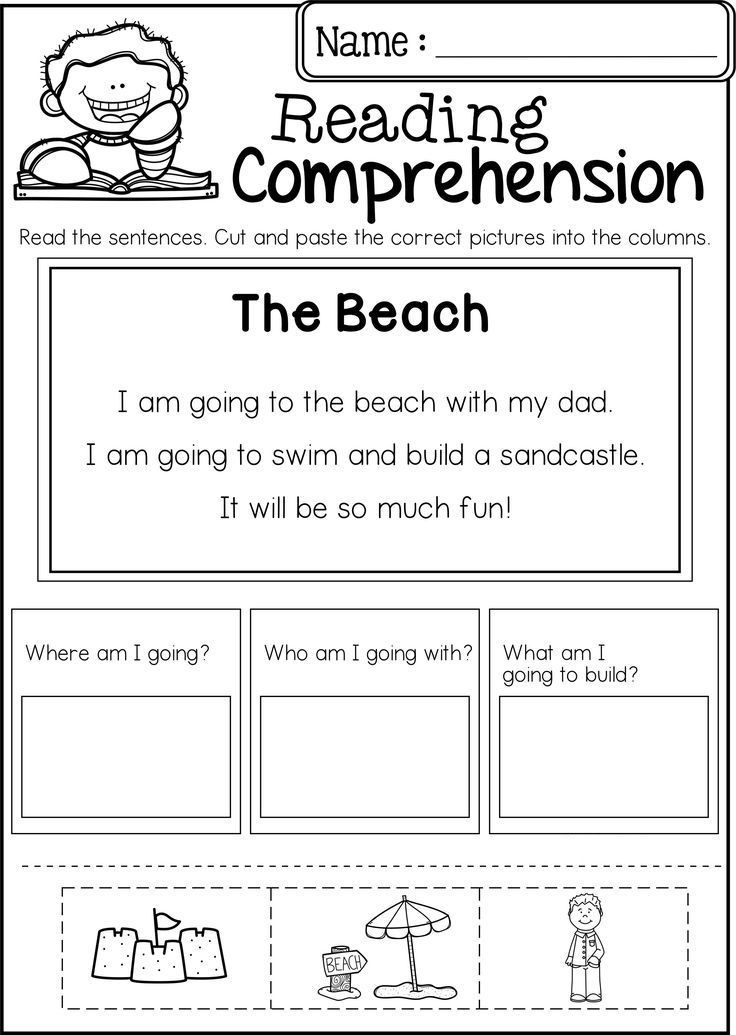 This activity resembles a bit like the random wheel, but students are asked to click on a box instead of spinning the wheel. Put a twist on this game and use the questions to make your very own classroom board!
This activity resembles a bit like the random wheel, but students are asked to click on a box instead of spinning the wheel. Put a twist on this game and use the questions to make your very own classroom board!
Learn more: Worldwall
18. Teach to Understand
Giving even our youngest learners a clear understanding of exactly what is expected from a lesson is vital to their success. This video provides students and teachers with a better understanding of what it means to visualize. Understanding vocabulary can make explanations and student understanding that much stronger at the end of the day.
Learn more: Shannon McGilloway
19. Visualize Through the Senses
It's important to note that most stories that are aimed at younger students have some sort of connection to their feelings. Therefore, using a visualization strategy that connects the story to different feelings a child might have, could be vital to helping them better understand and comprehend the story.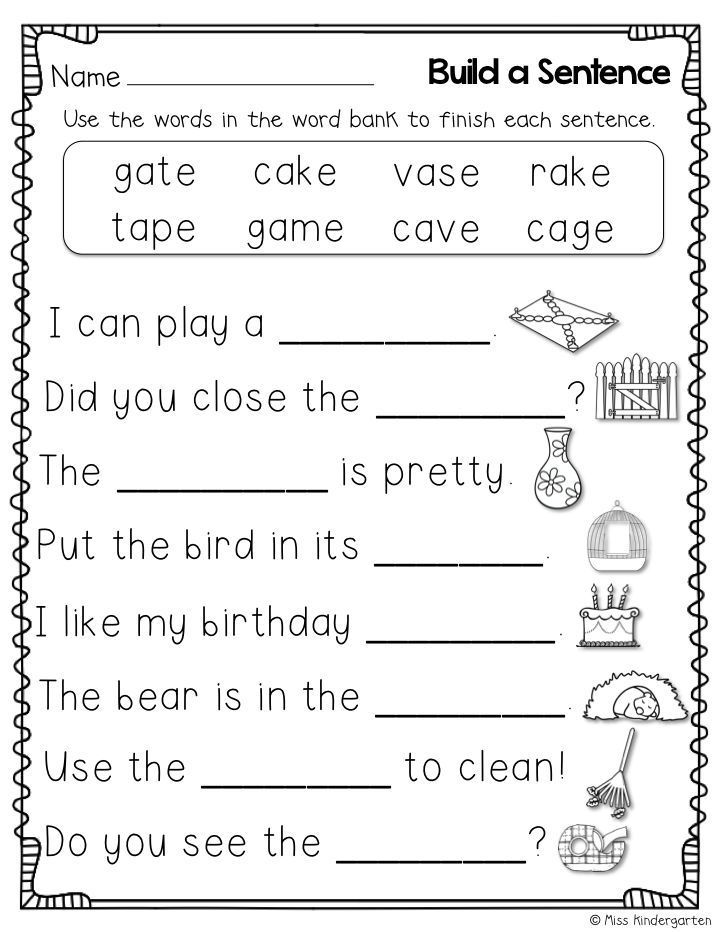
Learn more: Toni Allen
21. Visualize Song
Any teacher knows that songs help students to remember and understand different strategies and lessons. Just like with anything else, making a song for visualizing a story will help students refer back to their understanding. This song is great for exactly that and it's definitely one to get stuck in your head!
Learn more: Teacher Friend
22. Story Retell
Being able to retell the story is part of the common core curriculum in first grade. It's important to provide students with a variety of different stories throughout your lessons. With some being ones they know by heart and others being totally new. Use this short Tortoise and the Hare read aloud and have students reenact it!
Learn more: Get Set Parents
23. Parts of the Story Song
Well, just like with visualizing, it's pretty evident that teachers know how important songs are to students' understanding and comprehension.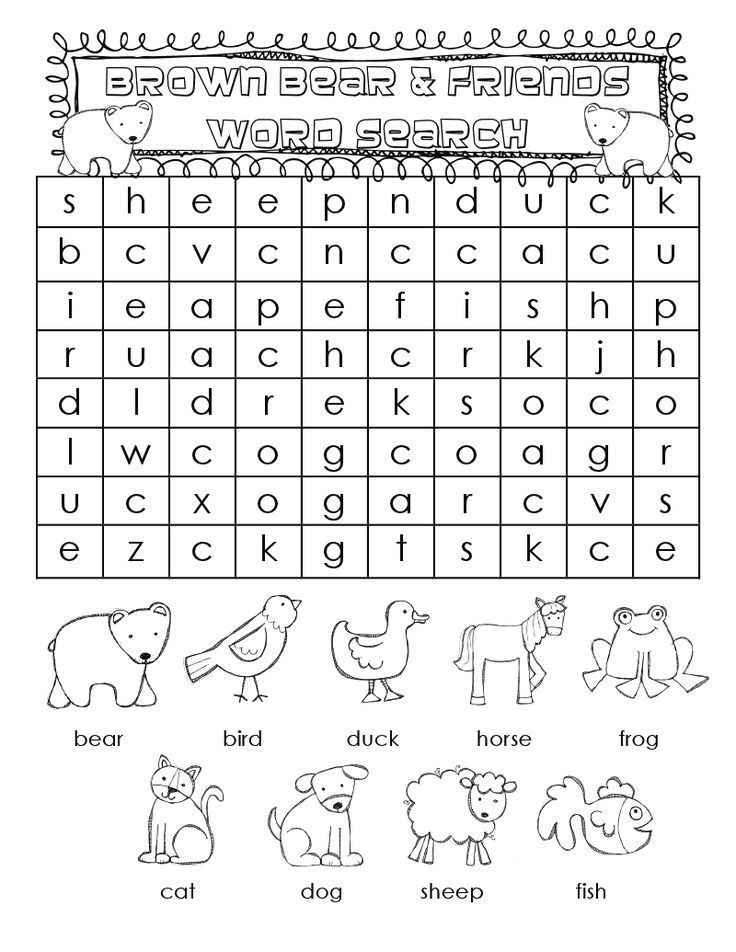 This song is perfect for being able to retell the story. Students will have a better understanding of the different parts of the story, making it easier for them to understand and retell the story.
This song is perfect for being able to retell the story. Students will have a better understanding of the different parts of the story, making it easier for them to understand and retell the story.
Learn more: Jack Hartmann Kids Music Channel
24. Retell the Story
In a world that is centralized around distance learning and working from home, it's important to have materials ready to go in an event that students won't be in school. This video does just that and provides details for both students, teachers, and even parents to have a full grasp of the learning objective.
Learn more: Mandy Yates
25. Character Traits
View this post on Instagram
A post shared by Life Between Summers (@lifebetweensummers)
Another very fun activity for reading comprehension is understanding different character traits! A simple and fun way to do this in first grade is to make a poster together about one of the student's favorite stories.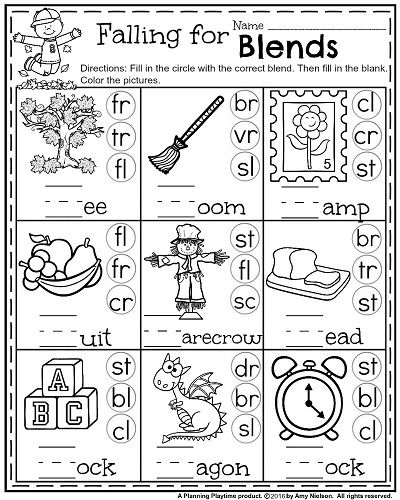 First, read the story together and then create a poster that can be displayed in the classroom.
First, read the story together and then create a poster that can be displayed in the classroom.
Learn more: Life Between Summers
26. Dot to Dot
View this post on Instagram
A post shared by Invitation to play and learn (@invitationtoplayandlearn)
This is a pre-reading comprehension strategy that can really be tailored for any grade, age, or story! This dot to dot activity with help to activate prior knowledge and build vocabulary that may arise in the story.
Learn more: Invitation to Play and Learn
27. Christmas Word Families
There's no doubt that reading comprehension and fluidity go hand in hand. Constant practice with students' reading skills, will ultimately help them to improve their comprehension skills.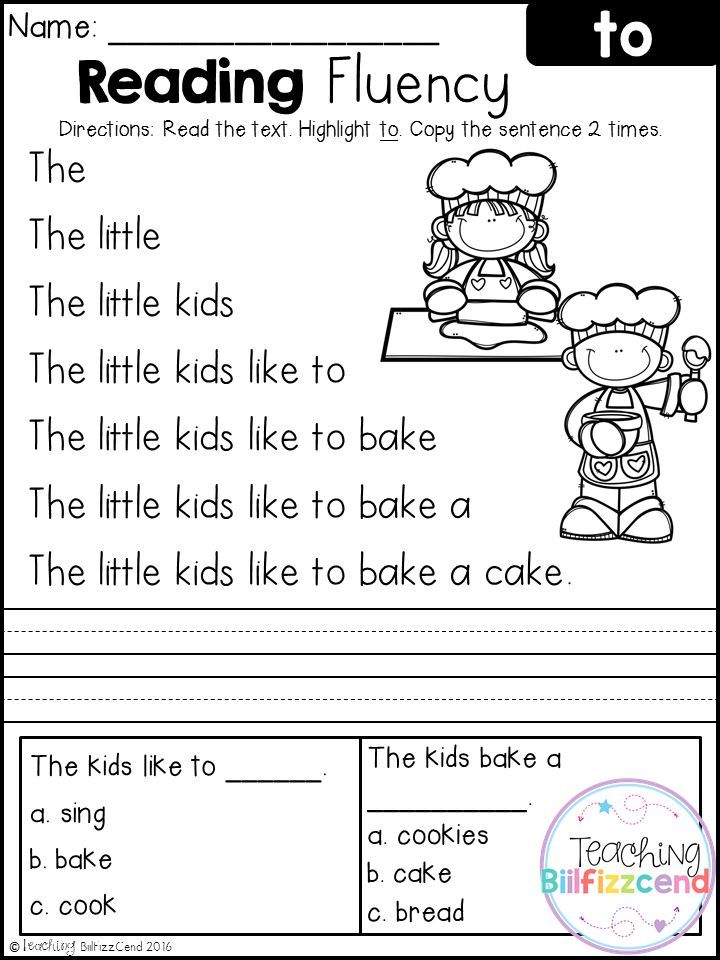
Learn more: Invitation to Play and Learn
28. Retell Activity
This video will walk students through a read-aloud and retelling activity. The best part about this video is that you can take it and complete it with students or send it home for an at-home distance learning activity. Tailor is to your curriculum and enjoy!
Learn more: The Elementary ELL Teacher, Mrs. Brenda Pearson
29. Brown Bear Brown Bear, Game Show Quiz
In all honestly, bringing a game show on the computer into the classroom can be a total hit or miss. Although, this particular game show is right at the level of most first graders! Making it that much more engaging. At the end have your students join the leaderboard and see if you can get to #1.
Learn more: Worldwall
References for future first-graders
We invite first-graders
Updated sections: freeze frame, art galleries, English theater
Swipe > Primary School > First Grader > References
Family Reading of Future First Graders
Dear Parents of Future First Graders! Of course you want your children to be curious and aspired to knowledge, and, as a result, would have achieved success in life.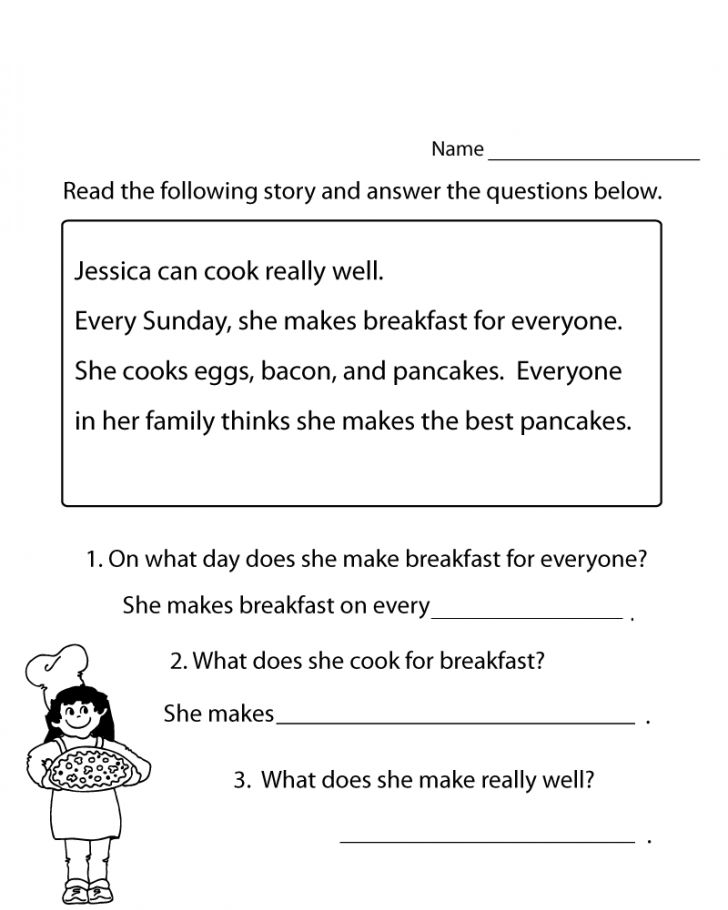 One of the best means of development in all times were books. Taking into account the leading role of the book in the development of the child, before you and before us, teachers, task teach to love the book . This is a huge collaboration!
One of the best means of development in all times were books. Taking into account the leading role of the book in the development of the child, before you and before us, teachers, task teach to love the book . This is a huge collaboration!
We bring to your attention a possible recommended list of children's books for family reading. In order for them use, you must observe the following rules for educating a child's need for reading and books
Rule 1
Remember that a book is not a punishment. You can not interrupt the child's game by ordering to urgently read the book, because it given to read at school. It is important that the child wants to read. To do this, parents use various methods. For example, an adult begins to read and asks the child to continue reading; asks to read a short text under picture, the rest of the text is read by an adult; read a book with the whole family (dad starts, mom continues, ends child).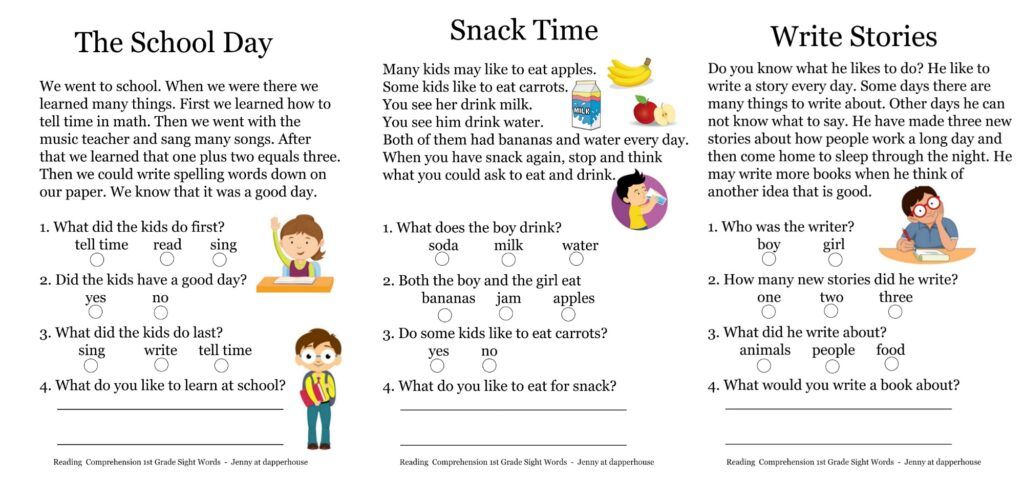 Let the meeting with the book bring joy!
Let the meeting with the book bring joy!
Regulation 2
In order for a child to want to read for himself, he needs to read to adults as much as possible. Set the rules in the family: before At bedtime, an adult must read an interesting book for half an hour.
Rule 3
Arrange at home (in the family) a discussion of the books read (who read what, about what, what interested, surprised, ready share). It is important for the child to participate in these discussions as well. Draw your favorite book characters.
Rule 4
On long trips (by car, train, plane), invite your child to listen to an audiobook. Discuss with him who of the characters he liked, he (she) would like to listen to the book of this author.
Rule 5
The list of books below is a guideline. Only a parent can know the preferences of their children, therefore, you have the right to use this list or supplement it with your own books, which you will gladly read by your child.
List of fiction for family reading with future first graders
parents.
Literary fairy tale
- Andersen Hans Christian "Thumbelina" and other fairy tales (by choice).
- Brothers Grimm "Rose and White", "Seven Brave Men", "The Brave Little Tailor".
- Kipling Rudyard "Elephant" and other stories about animals.
- Perrault Charles "Little Red Riding Hood" and other fairy tales (optional)
- Alexander Pushkin "The Tale of the Fisherman and the Fish" and other tales.
- Rodari Gianni "The Adventures of the Blue Arrow", "The Adventures of Chippolino".
- Chukovsky Roots "Cockroach Fly", "Cockroach", "Telephone".
Stories about children and for children
- Nosov Nikolay "Druzhok", "Live Hat", "Karasik", "Dreamers".
- Leo Tolstoy "Girl and mushrooms", "Bone", "Mouse went out for a walk .
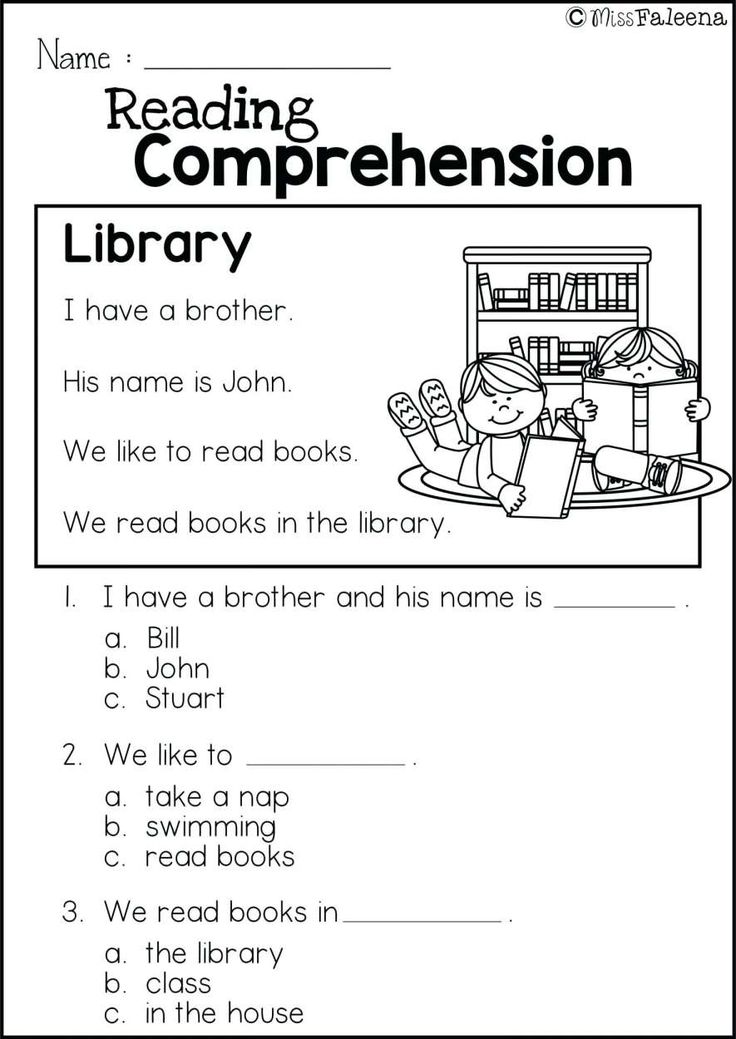 ..", "Fire dogs", "Old grandfather and granddaughters."
..", "Fire dogs", "Old grandfather and granddaughters."
About animals
- Bianchi Vitaly "Like an ant hurrying home", "Who sings with what", "Fox and mouse", "Teremok", "Tails".
- Prishvin Mikhail "Gadgets", "How a cat and a dog quarreled", "It's cold for Aspens", "Rowan blushes".
- Charushin Evgeniy "Volchishko", "Stupid Monkeys", "If you want to eat - you will learn to speak", "Pig", "Cunning Mom”, “What kind of animal?”, “Shur”.
Poetry for children
- Agnia Barto "Help and other poems", "Left away".
- Zakhoder Boris "Gymnastics for a Tadpole", "Once Upon a Time Fip", "About Furry and Feathered".
- Marshak Samuel "Merry alphabet", "Merry count from 1 to 10", "That's how absent-minded ...". * "Where did the sparrow dine?", "All year round", "About everything in the world."
- Mikhalkov Sergey Poems.
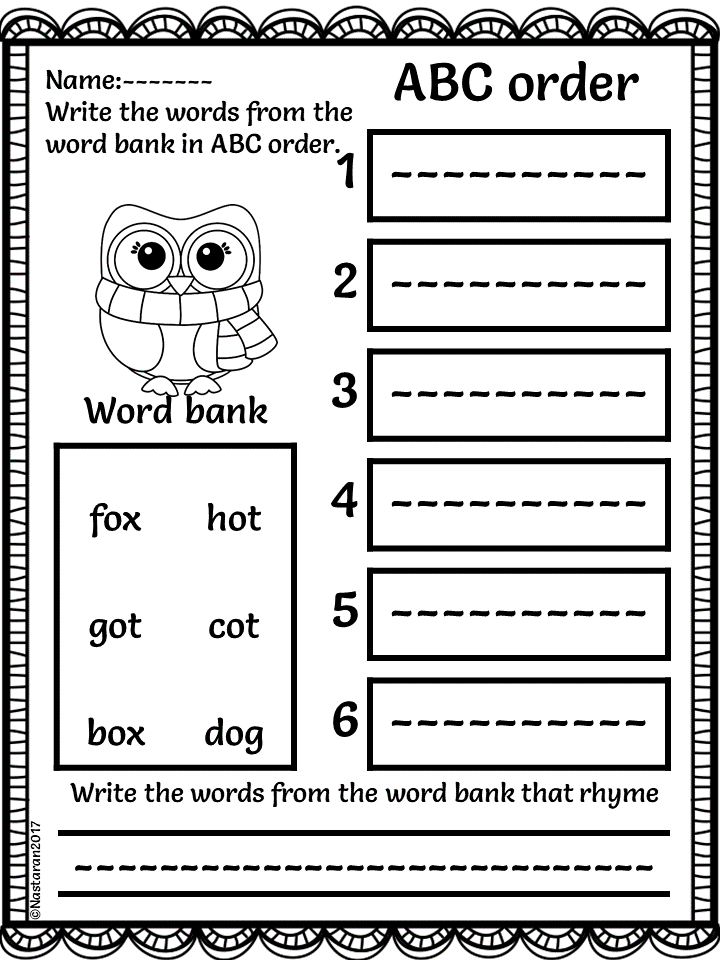
- Moshkovskaya Emma "One Hundred Children - Kindergarten".
- Sapgir Heinrich "Losharik", "Night and Day", "About a Sheep and a Little Man", "Shadow-Deer", "Clouds".
- Uspensky Eduard "Colorful family".
- Harms Daniil "Bulldog and Taxi", "Merry Siskins", "Liar", "Ivan Ivanovich Samovar", "Ivan Toporyshkin", "Cats", "Million", "Very scary story", "What was it?".
We wish you success and happy reading!
Primary school (grades 1-6).
Summer reading list for first graders: without Mikhalkov, Barto and Rodari
It seems that summer reading lists for schoolchildren have not changed for decades - as if nothing has happened in the literary world since Rodari and Zoshchenko. But classics are classics, and I also want variety. About him and about what, how and why to read with children in the summer, the teacher of Russian and literature Olga Gvindzhiliya tells.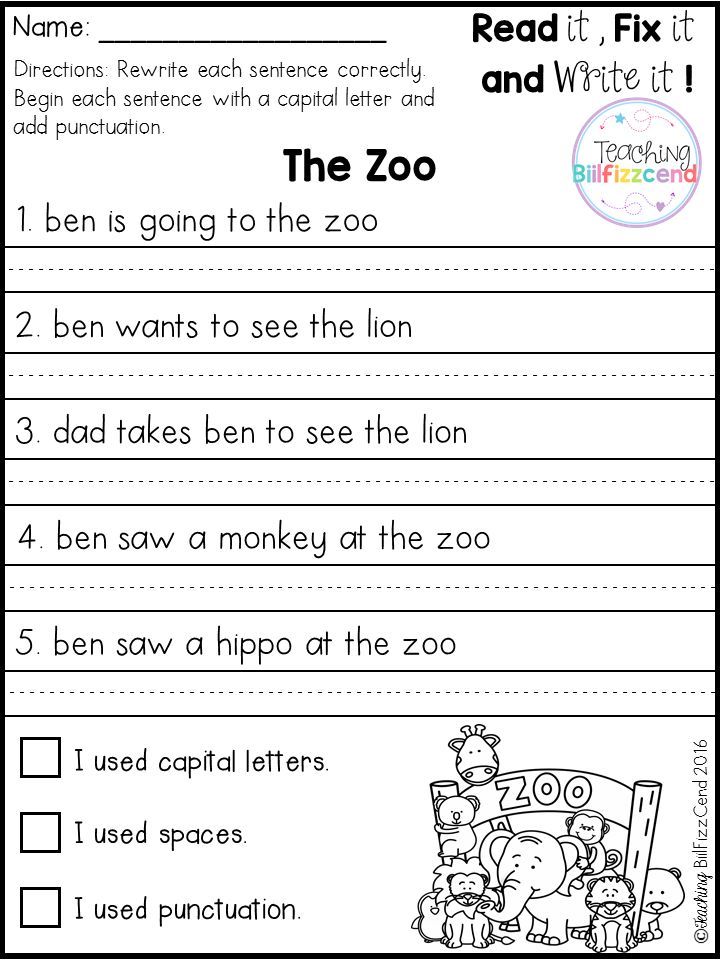
At one time there was a lot of discussion among professional teachers about "summer reading lists": to be or not to be? I adhere to a conservative point of view - in my opinion, lists are needed. But not as something indestructible and obligatory for execution. More like a landmark and navigator in a vast sea of books.
Indeed, despite the huge amount of information (blogs, reviews, annotations, publications), many adults, when choosing a book for a child, are guided by their memories.
And the world is different today, and children are different, and books are different for them
And since adults talk so much about how important and necessary reading is, they should understand: only thanks to them can children discover the beauty of the book world . And the steps on the way to regular reading should be consistent and thoughtful, because at each age a child has its own characteristics - both reading and personal.
But at the same time, it seems to me that reading should not just be “according to age”. Reading should be individual. In the sea of books today, everyone can swim along their own route.
Reading should be individual. In the sea of books today, everyone can swim along their own route.
I myself read a lot and, choosing books for each class, I rely on my reading preferences. For me personally, the text (beautifully written or beautifully translated), content, illustrations are important. I try to add as many books by contemporary authors as possible to the lists. But I have my own reading experience and choice. It may not coincide with the choice of another reader, so I always tell children and parents that their list may differ from mine.
I definitely include comics in the lists and separately tell that there are a huge number of the most interesting books in the non-fiction genre that can no longer fit into the summer list.
For the first grade, books with simple, close and understandable plot stories are needed (including those cases when parents read to children: some stories are better perceived “from an adult voice”). Starting from the second grade, the plots of the stories gradually become more complicated.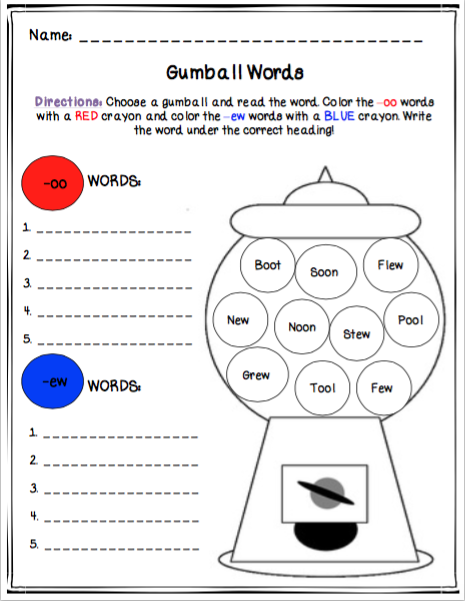 Different genres appear: fairy tales, fantasy stories, detective stories, travel and adventure stories. The number of books to choose from increases significantly, and it happens that children use the lists not only in the summer, but also during the school year.
Different genres appear: fairy tales, fantasy stories, detective stories, travel and adventure stories. The number of books to choose from increases significantly, and it happens that children use the lists not only in the summer, but also during the school year.
The meaning of long lists is also that it is important for every child to find the very book that will lead him into the book world. She might be in this collection.
For future second-graders
For those who read themselves:
- M. Nilson "Tzatziki goes to school";
- M. Bershadskaya "Big Little Girl";
- N. Evdokimova "Peacock on a walk";
- O. Kurguzov "The sun on the ceiling. Stories of a little boy";
- D. Sabitova “Mouse Glyceria. Colored and striped days";
- V. Lunin "The Adventures of Sweet Lisa";
- H. Mäkelä, E. Uspensky "Terrible Mr. AU";
- K. Nöstlinger "Stories about Franz";
- M.
 Gudrun “Grandma! Frieder shouts;
Gudrun “Grandma! Frieder shouts; - N. Gernet "The Tale of the Moonlight", "Katya and the Crocodile", "The Dragon Lost";
- R. Goscinny, J.-J. Sampe "Little Nicolas".
For adults who read to children and with children:
Literary classics
- M. Zoshchenko "Stories about Lyolya and Minka";
- R. Pogodin "Stories about cheerful people and good weather";
- Yu. Sotnik "How I was independent";
- E. Permyak "Grandfather's piggy bank";
- E. Emden "House with Magic Windows";
- Yu. Sotnik "Vovka Grushin and others";
- A. Raskin "How Little Dad Was";
- Y. Koval "Tales";
- L. Geraskina "In the country of unlearned lessons";
- V. Dragunsky "Deniska's stories".
Modern Russian children's literature
- N. Dashevskaya "Theo the theater captain";
- A. Ignatov "Kingdom of M";
- D.
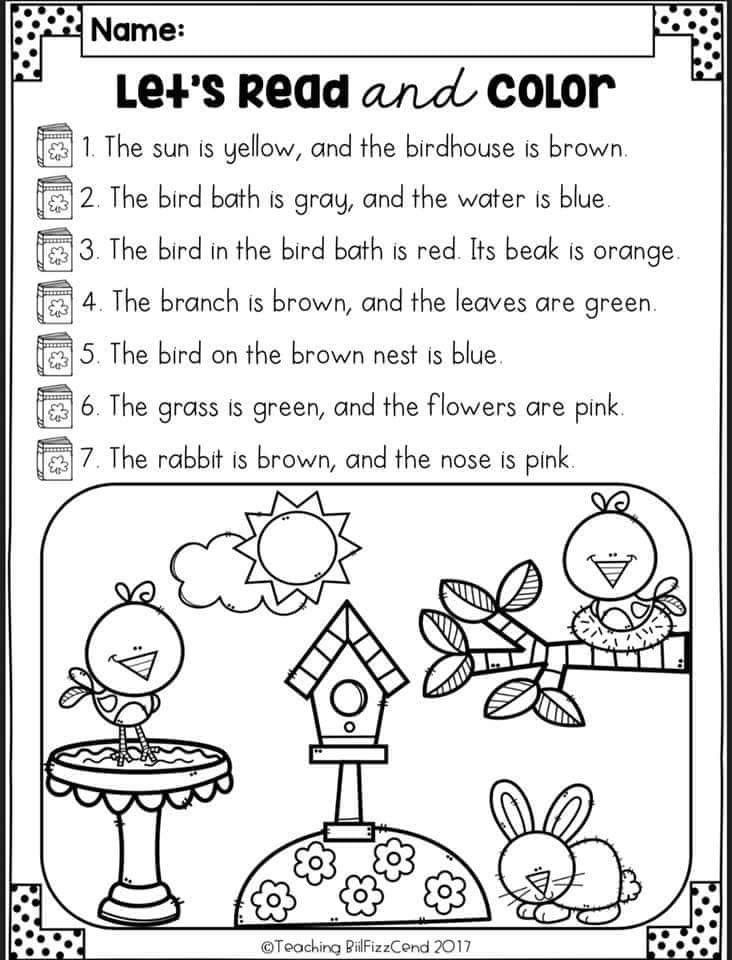 Sabitova "Circus in a box";
Sabitova "Circus in a box"; - P. Kalmykov "Summer of multi-colored clubfoot";
- S. Vostokov "Frosya Korovina";
- V. Lederman "Svetlik Tuchkin and the Bubble of Desires", "Pet Geshka", "Senka and the Sea";
- T. March "Anka M and Anka P";
- T. Mikheeva "Sagebrush Elephant";
- A. Nikolskaya, S. Ivoilova, I. Shevchuk "To the apple!";
- K. Gorbunova "Once in a closet", "Shaggy and toothy do not enter", "Ba from the valley of jumping streams", "Who are you, Nanny Wu?";
- A. Kovalenkova "The Little Mouse Who Is There";
- K. Denisevich "Neighbours";
- M. Fedotova "Game of stones".
Foreign children's literature
- J. Arroux-Vigno "The Adventures of a Family from Cherbourg";
- R. Dahl "Matilda", "BFG: Big Good Giant", "Witches", "Billy and Knops";
- C. DiCamillo "Thank You, Winn-Dixie," "The Adventures of Despero Mouse";
- P.
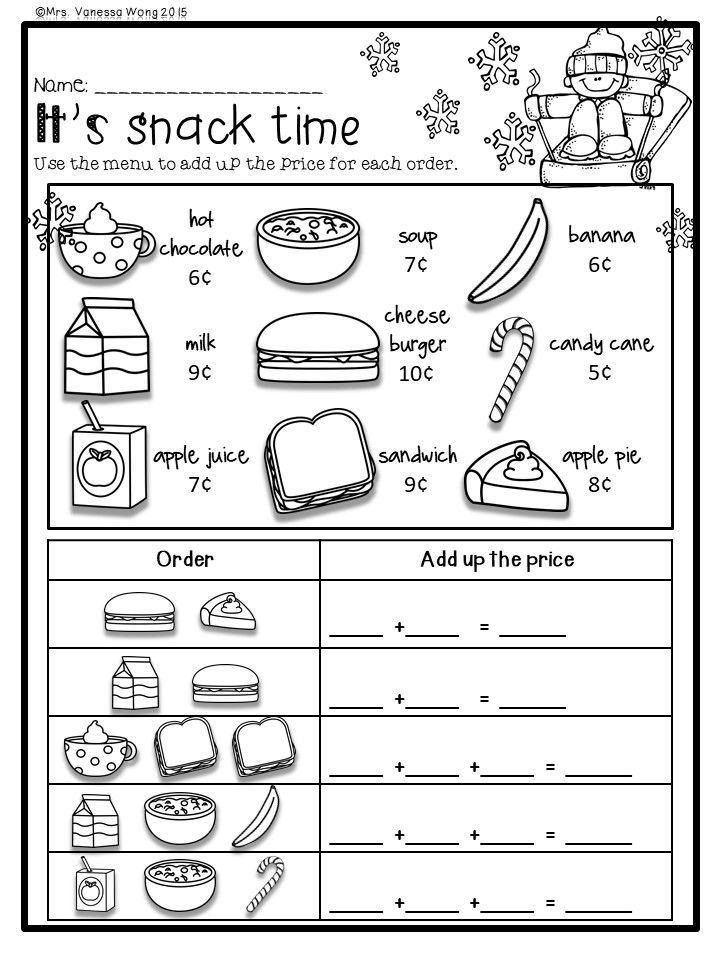 Travers "Mary Poppins";
Travers "Mary Poppins"; - T. Jansson "Magic Winter", "Wizard's Hat";
- R. Lagercrantz "My heart is jumping and laughing", "Where is Dyunne?";
- T. Appelgren, S. Savolainen "Westa-Linne and her friends";
- M. Ende "Jim Button-and-Machinist Lucas";
- M. Kruger "Blue Bead", "Hello Caroline!";
- D. Drescher "Drainpipe Dwarf";
- H. G. Sloan, Orange Possum;
- T. Parvelo "Ella in the first class";
- B. Rervik "Akuliska the Enemy of the Radish and other stories about the Fox and the Piglet", "Grandfather Surveillance", "How the Piglet was ill with leopardosis", "Bird's Tail Cafe", "The Battle of Mosquitoes", "Vaflyambala".
Graphic novels and comics
- Phoebe and the Unicorn D. Simpson;
- M. Plessy "The Wind in the Willows";
- E. Didier, O. Meller "Emile and Margot";
- T. Jansson "Moomin";
- L.
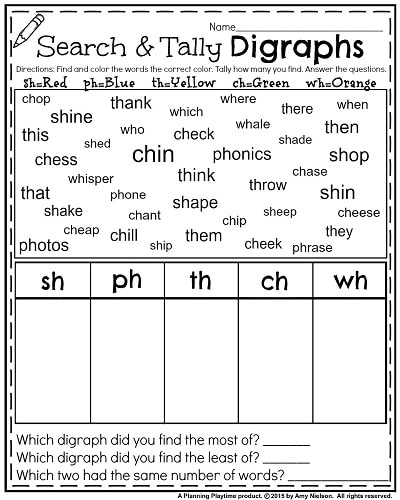
Learn more


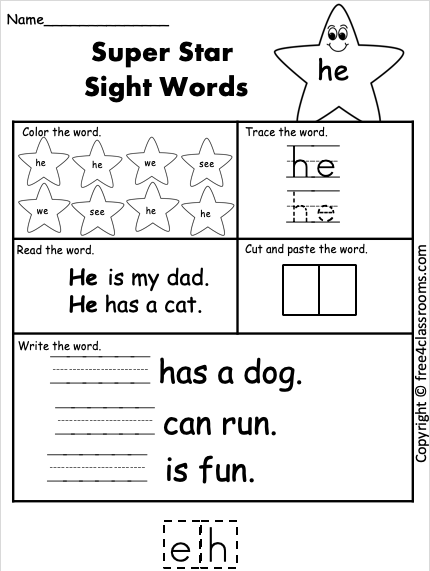
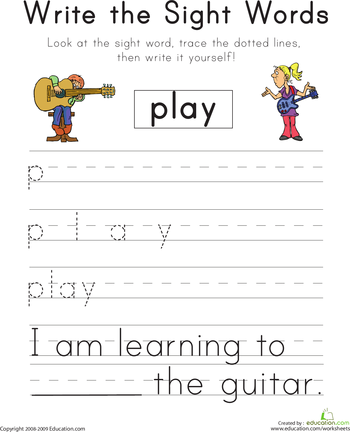

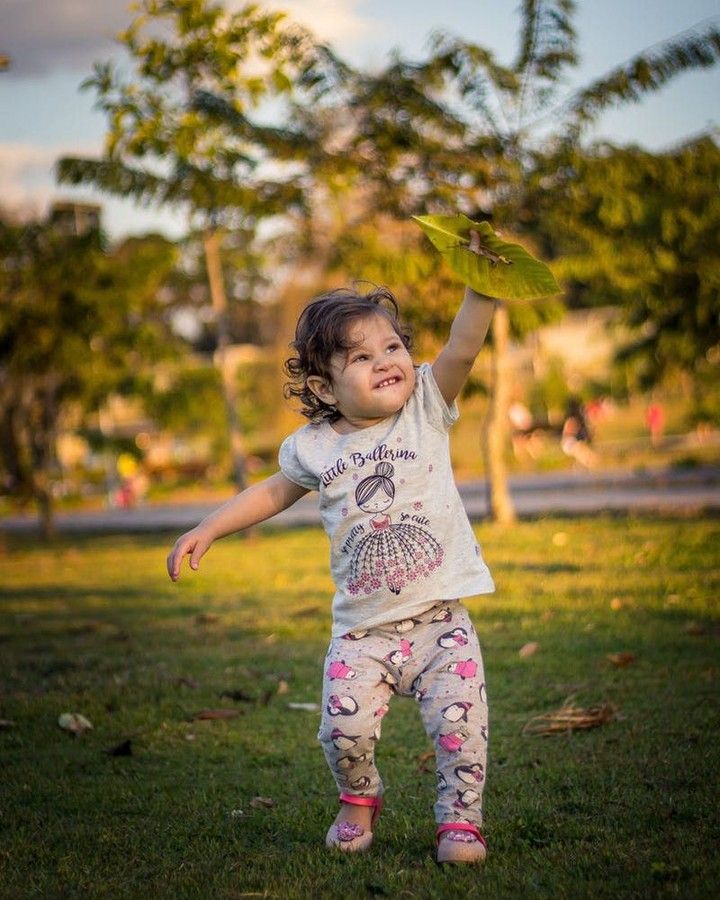

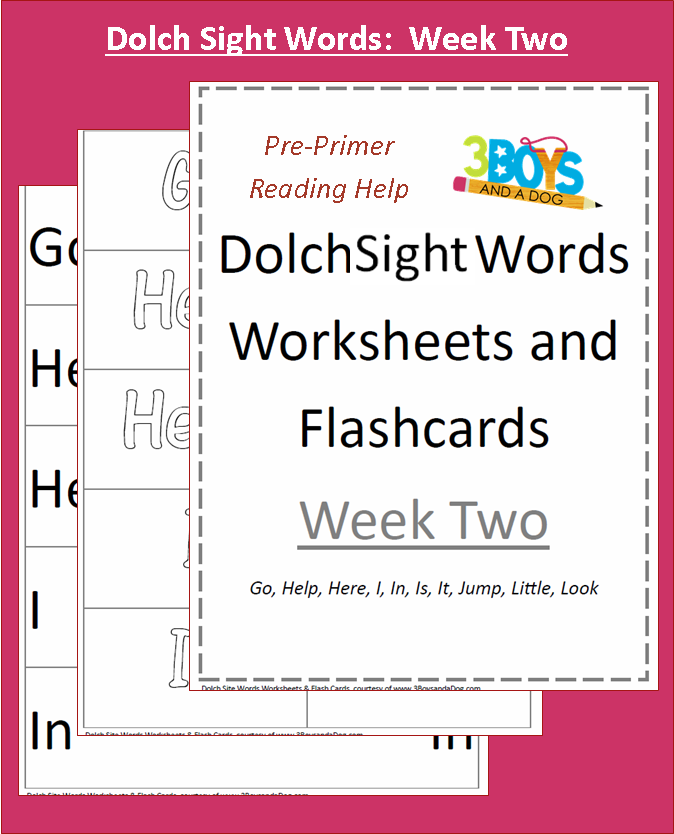
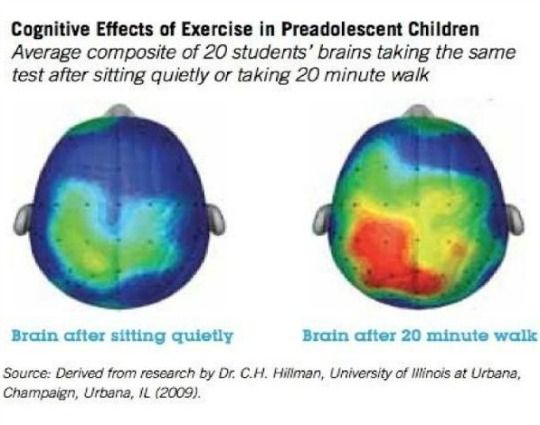
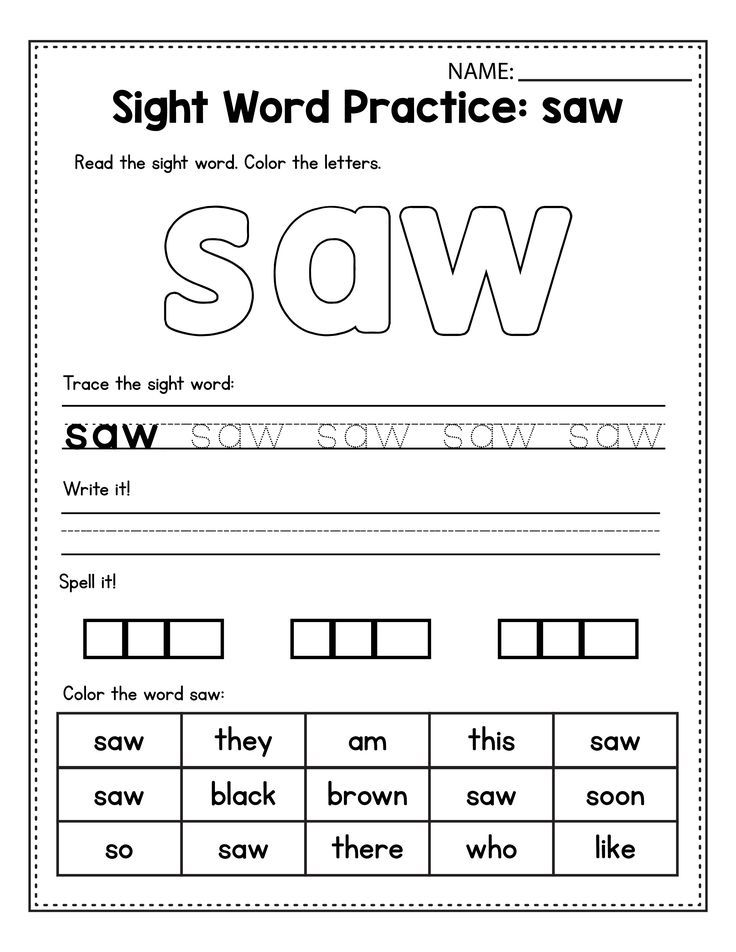
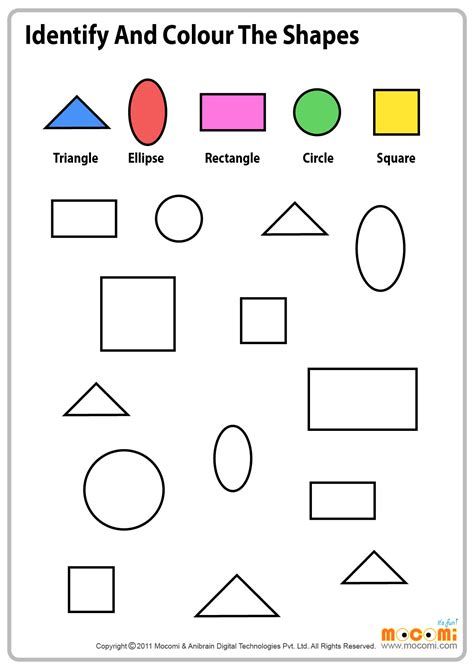
.png)